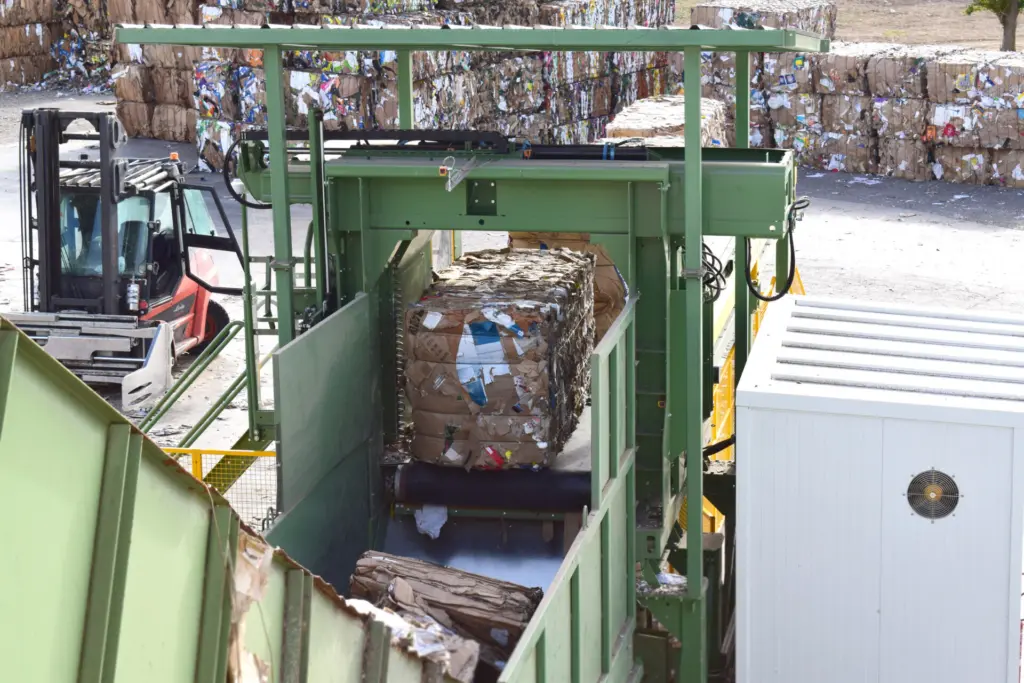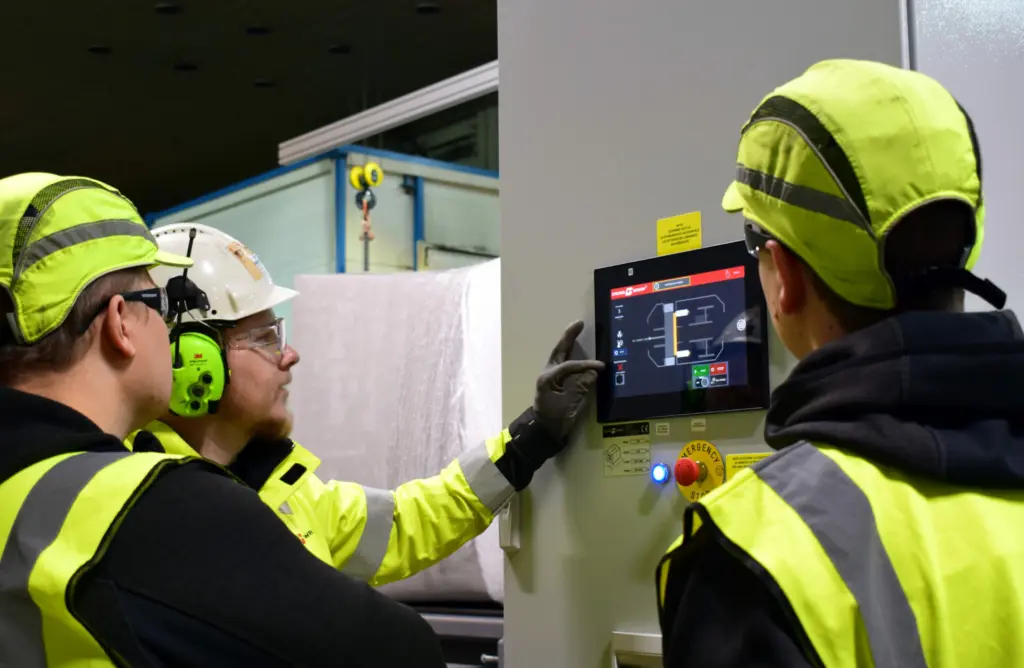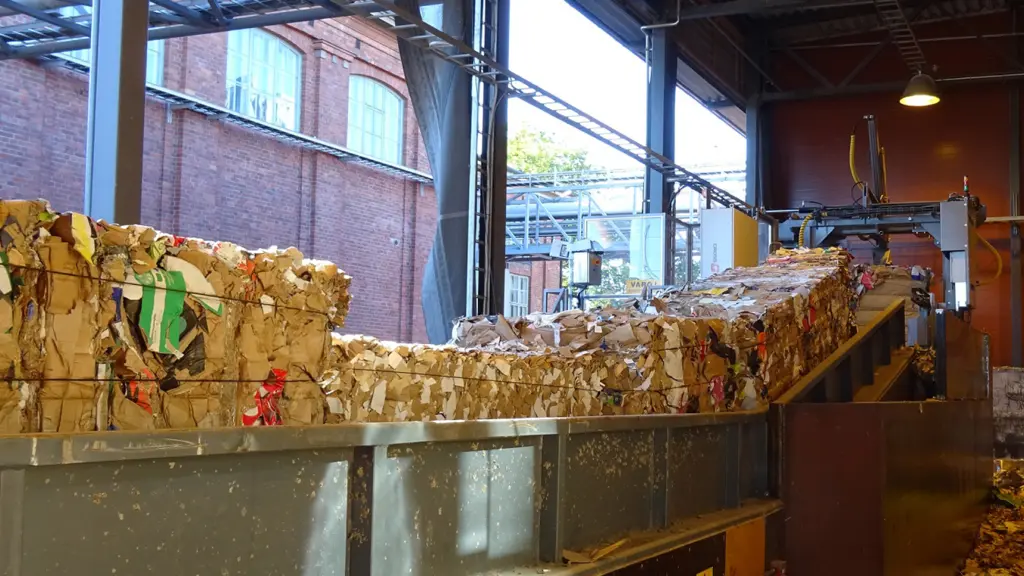
NEWS
The cost of plastic recycling: What’s the role of automatic feeding in the process?

Is your plastic recycling facility ready to handle the increasing demand for recycling? The cost of plastic recycling has been a hot topic in the industry lately, and recent global developments have left their influences.
With the energy crisis and fluctuating raw material prices, predicting how prices will change is difficult. But one thing is certain: your plastic recycling facility must be prepared to adapt to these changes.
At Cross Wrap, we understand the challenges you might face in the plastic recycling business. That’s why we offer advanced automated solutions that can increase the efficiency of your facility in a cost-efficient way.
Read ahead and learn about the cost of plastic recycling and how automated solutions in the early stages of plastic recycling processes can help your facility work cost-effectively.
The cost of plastic recycling consists of many streams
As we know, there is no one-size-fits-all answer to the cost of plastic recycling. The plastic recycling cost by country varies depending on many things. For example, the type of plastic being recycled, the volume of plastic being processed, and the specific recycling process being used all affect the costs.
Generally, the cost of plastic recycling on an industrial scale includes several necessary expenses, such as:
– Collection and transportation of the material to the recycling facility. This also includes labor and fuel costs.
– Sorting, feeding, and processing. Usually, especially feeding is a very labour-intensive stage.
Material feeding in the plastic recycling industry tends to rely mainly on manual labor. But what if you could automate this stage and save costs?
– Energy usage. Energy efficiency is more and more essential to save costs and the environment. The recycling process requires significant energy and water usage, which can clearly impact overall costs.
– Machine maintenance. How often do the machines need maintenance or spare parts? The device’s life cycle has a huge impact on the cost-effectiveness of your facility’s plastic recycling.
We’re proud to say that our machines are built for demanding industrial processes to last years. In addition, our fast and responsive global service network and spare part delivery ensure seamless operations.
– Of course, the market demand for recycled plastic also affects the cost of plastic recycling. We cannot directly influence this, but when the prices fluctuate, it is essential to focus on reliable daily operations.
Automatic wire cutting plays a critical role: Save one operator’s work input per shift

Save labor costs with automation!
Automation is one of the best answers to the increasing demand for plastic recycling in the future, as the plants have to be ready to work efficiently with bigger capacities.
It is difficult to imagine a (cost) efficient process without automation, which maintains continuous high performance and enables fluent production scaling.
Usually, the material feeding stage relies heavily on manual labor, which includes wire-cutting by hand in the facility. However, the efficient start of the process determines the efficiency of many upcoming stages and their effectiveness.
Early-stage automation plays an essential role in the cost-effectiveness of plastic recycling, as it helps to ensure a seamless process.
At Cross Wrap, we have developed a solution that helps automate the feeding stage, resulting in increased production rates, improved workplace safety, and reduced labor costs.
The Dewiring Machine automatically cuts and removes wires from bales, removing the need for manual wire removal and saving approximately one operator’s workload per shift. How much does this make in your plant?
If you have been struggling to find qualified operators in the feeding tasks, automation has also answers for your plant. With the Dewiring machine, you can replace the manual wire cutting by hand with a safe and effective machine and direct operators to other, more profitable tasks.
Notably, the trend is that new plastic recycling plants choose also automate the feeding stage by default. This has a huge competitive advantage, as the plastic recycling plant can operate effectively from the start.
How about energy efficiency?
Due to the energy crisis, plastic recycling plants have been paying more and more attention to their energy costs and efficiency. Energy consumption typically makes up roughly one-third of the total operational costs of plastic recycling.
There are several reasons why the automated feeding stage is also good news for the energy efficiency of your plant. First, you can control the feeding and keep the material flow consistent and reliable from the start.
The automatic Dewiring Machine is highly energy-efficient compared to other machines in the field.
The Cross Wrap Dewiring machine is highly energy-efficient compared to other machines used in plastic recycling. It uses an average of 25 kW/h while running, and when waiting for a new bale, it goes into standby mode and turns off the hydraulics. This results in a significant reduction in energy consumption. And when the sensor detects a bale, the machine automatically starts from standby mode.
How can automatic dewiring affect the cost of plastic recycling overall?

When speaking of gaining more cost benefits, many might wonder how investing in a new machine can help you to work cost-efficiently. The benefits come with automation, long-term savings and reliable operation 24/7. Contact us for a specific example of how Dewiring can benefit your plastic recycling plant.
How does the Dewiring machine affect plastic recycling costs?
- Automatic bale dewiring reduces manual labor. The machine cuts the wires on the bales and coils them into recyclable bundles.
- Your plant can save approximately one operator per shift, as there is no need to cut the bale wires by hand. Hence you can also direct employees to do more productive tasks, reducing labor costs.
- Machine has predictable maintenance costs. All our machines are highly reliable, with online support available.
- Dewiring machine is the most energy-efficient option in the market. It uses only 25 kW/h on average.
- Scale your production with no less than 80 tonnes per hour capacity – when the feeding stage is efficient, your plastic recycling plant can speed up all upcoming stages.
- Last but not least: Improve the safety of your facility as you can remove the wire-cutting by hand. Thus you can minimise the risks of manual work.
The Dewiring Machine is the market leader in automatic wire cutting in plastic recycling plants.
Want to hear more about our cost-effective solutions for your plastic recycling plant?
We are the first industrial operator capable of breaking the success of industrial and automatic wire removal. The Dewiring Machine is the industry standard in plastic recycling plants, and we have delivered machines to numerous countries.
Our goal has always been to optimise our customers’ operations and provide them with long-term cost savings. Contact us directly if you want a specific example of how we can support your operations.
Read more about our cost-efficient solutions in plastic recycling.
More news



Inspired by this case? Want to solve your own crosswrap challenge?
Leave us a message, and our expert will get in touch to discuss your case.
"*" indicates required fields